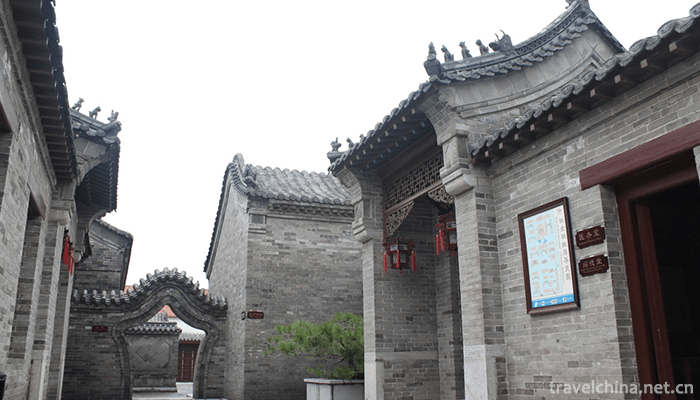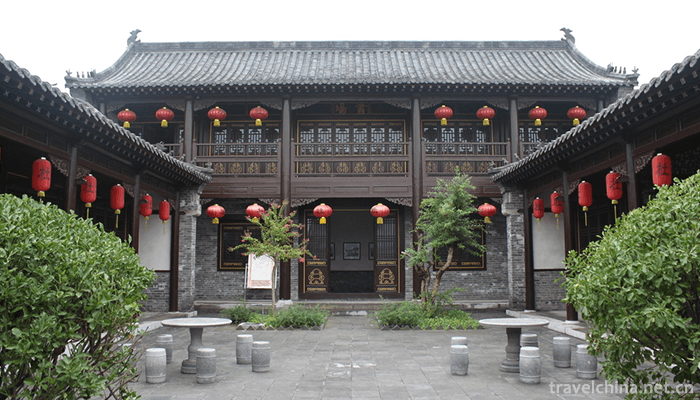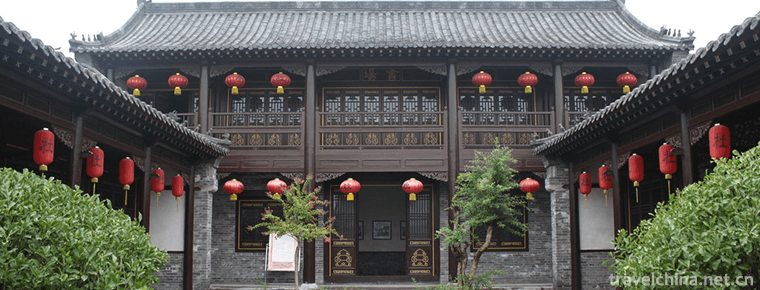Du Shoutians former residence
Du Shoutians former residence
Du Shitian's former residence is the old residence of Du Shitian, the emperor's teacher of the Qing Dynasty, as well as the old residence of many famous officials of the Du family. Located in Binzhou Bincheng District Binbei Street South Street. There is a wooden archway in front of the door, with plaques of "Taishidi" and "Xiangguodi" hanging at the head of the door, and plaques such as "Fangbodi", "Yayuan", "Chuanwang", "Grandfather and Brother Bird's Nephew Hanlin" hanging in the hall. All the buildings are Sihe courtyard, which covers an area of about 25 mu and contains 28 small courtyards. There are more than 300 houses, such as halls, embroidery buildings, chambers, ancestral halls and so on. There are only embroidered buildings, living rooms and some halls and compartments. The architectural style is simple and simple, which is a typical architectural feature of northern Shandong in Ming and Qing Dynasties. In 1985, it was listed as a cultural relics protection unit at the county level. In 2004, it was listed as the cultural relics protection unit of Binzhou City. It was opened to the outside world on April 27, 2010. In 2010, it was awarded the national AAAA level tourist attraction by national tourism.
Summary
Du Shoutian's former residence is the property of his parents and many uncles and brothers. From the Ming Dynasty, the Du family was a famous family. By the end of the Qing Dynasty, there were 12 Jinshi, whose house was called Du Fu.
Du Shi, the founder of Du's courtyard, ranks second. According to the etiquette of the Ming Dynasty, his door can open three doors and five beams. However, Du's house is only one; his house can have five main rooms and nine beams, but there are only three main rooms and five beams. Du Shoutian ranked first grade. He did not buy an acre of land for his official life and did not add another room. Although the Du family in Binzhou has a large number of important court ministers and governors in the prefecture, the Du family's house is very ordinary, and the house decoration is also very concise. The disadvantage of family property is interesting to Du family's modesty and low-key of life, while their low-key of fame and their active dedication to being an official complement each other. This low-key way of life made the once famous Du family in Binzhou little known, even disappeared in the memory of the public.
Open and unobstructed is the typical feature of Du Shitian's former residence. There are not only gates in all directions of southeast and northwest of Du's courtyard, but also corridors in all directions. In the courtyard, the small courtyards not only open the back door and side door, but also have doors and corridors connected. There is no enclosed space in the courtyard, which is relatively independent, and the atmosphere is interlinked with each other. The whole courtyard reveals a kind of happiness, a kind of intimacy, a kind of warm and harmonious coexistence of brothers and sisters-in-law. The opening and inclusiveness of the courtyard forged a large number of honest officials. From here, the people who came to the political arena were like this building, inside the outer circle, advancing and retreating freely.
Entering the former residence, tourists will realize the essence of Du Shoutian's official work: to be modest and honest, to be patriotic, to be honest and diligent, and to be "correct, clear, peaceful and prudent".
Profile
Du Shoutian (1787-1852), Zizhinong, a native of Binzhou, Shandong Province (Bincheng District, Binzhou City, present-day Binzhou City). He was the teacher of Emperor Xianfeng. Du Du, his father, edited and repaired the Hanlin Academy in the Jiaqing period of Qing Dynasty, and was a left waiter of the Ministry of Rites. His family background is prominent, for a long time, "Shuxiang official family, family of more than one scholar", because Du family "a seven scholar", "father and son Wuhanlin", and there are additional "Taishi Taibao" senior officials, the Chinese Literature Dictionary, the Great Dictionary of Calligraphy and Painting, and the Dictionary of the Chinese Celebrity People's Congress have records of his family.
address
Near Chengguan Community, Binbei Street, Binzhou City, Shandong Province, you can take No. 24 bus directly.




-
1.Huanshui Bay Hot Spring Resort
Huanshui Bay Hot Spring Tourist Area of Anyang City is located at the exit of Anlin Expressway in Anyang Hi-tech Development Zone, Henan Province, close to National Highway 107 and the west side of Be
Time 2019-01-17 -
2.Scenic Spots of the Three Gorges of the Yellow River
The Three Gorges Scenic Area of the Yellow River, the national AAAA-level tourist attraction, the home of Chinese dinosaurs, painted pottery, flowers and Nuo culture.
Time 2019-01-18 -
3.Jiuizi Scenic Spot
Yuuzi Square is located in the Central District of Wuhu City. The square covers a total area of 678,800 square meters and its spatial structure is changeable. Priority is distinct and rhythmic
Time 2019-01-29 -
4.Xishuangbanna Mengwan Great Buddhist Temple
Situated in the suburbs of Jinghong City, the prefecture of Xishuangbanna Dai Autonomous Prefecture, Yunnan Province, the Monastery is built according to the national AAAA standard.
Time 2019-02-25 -
5.Eight treasures sweet rice
Babao sweet rice, also known as Babao rice, is a traditional snack with glutinous rice as its main ingredient. With jujube, lotus seed, Baitai, white fruit, longan meat, green red silk and so on
Time 2019-03-26 -
6.Legend of Boya Period
"When the evidence of the legendary place of Bo Yazi Period was found in Hanyang, I knew that it was hopeful to apply for the national level!" Yesterday, the reporter learned from the Provin
Time 2019-04-04 -
7.Auspicious gongs and drums in southern Shanxi
Weifeng gongs and drums in southern Shanxi are folk traditional percussion music which was born and popular in Linfen area of Shanxi Province. The first batch of them were selected into
Time 2019-05-07 -
8.Legend of Su Xian
The legend of Suxian is a local folklore with a long history. Su Xian, Ming Lian, from Guiyang. Su Da lost his father in his early years and depended on his mother for his life. One year, the plague w
Time 2019-06-17 -
9.Achi Wood Scraping of Lisu Nationality
"Aqimuguo" is a kind of self-entertaining dance for the masses, which is spread in the upper reaches of the Cangjiang River with Yezhi Township as the center. Its characteristics are that it
Time 2019-06-17 -
10.virtuous and filial
Xianxiao was born out of Buddhist folklore, and has a deep relationship with Xiliangle music, Dunhuang Bianwen and Hexi Baojuan. The way of inheritance mainly depends on the artistic population. Its c
Time 2019-07-01 -
11.Xu Wenchangs Story
The story of Xu Wenchang takes the history of the middle and late Ming Dynasty as the background. From the legend story of Xu Wenchang's youth, "Taking things from the pole", it has been tol
Time 2019-07-09 -
12.China Foreign Affairs University
China Foreign Affairs University is a small scale, high level and distinctive foreign ministry's sole institution directly under the guidance of serving the cause of China's diplomacy and cultivating
Time 2019-11-29